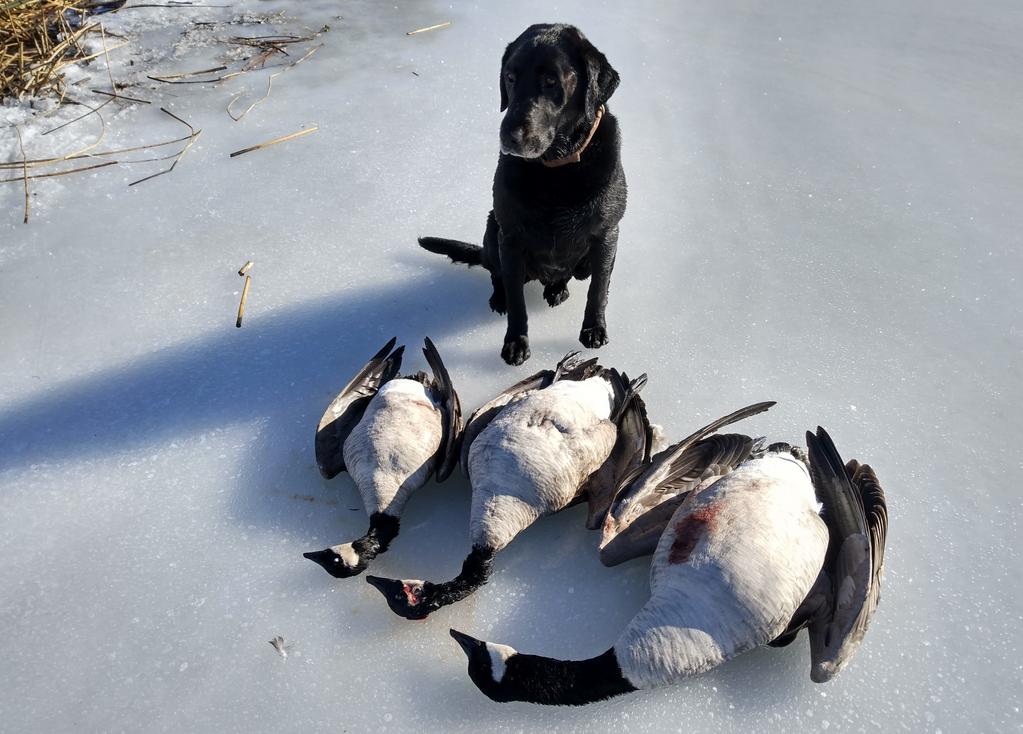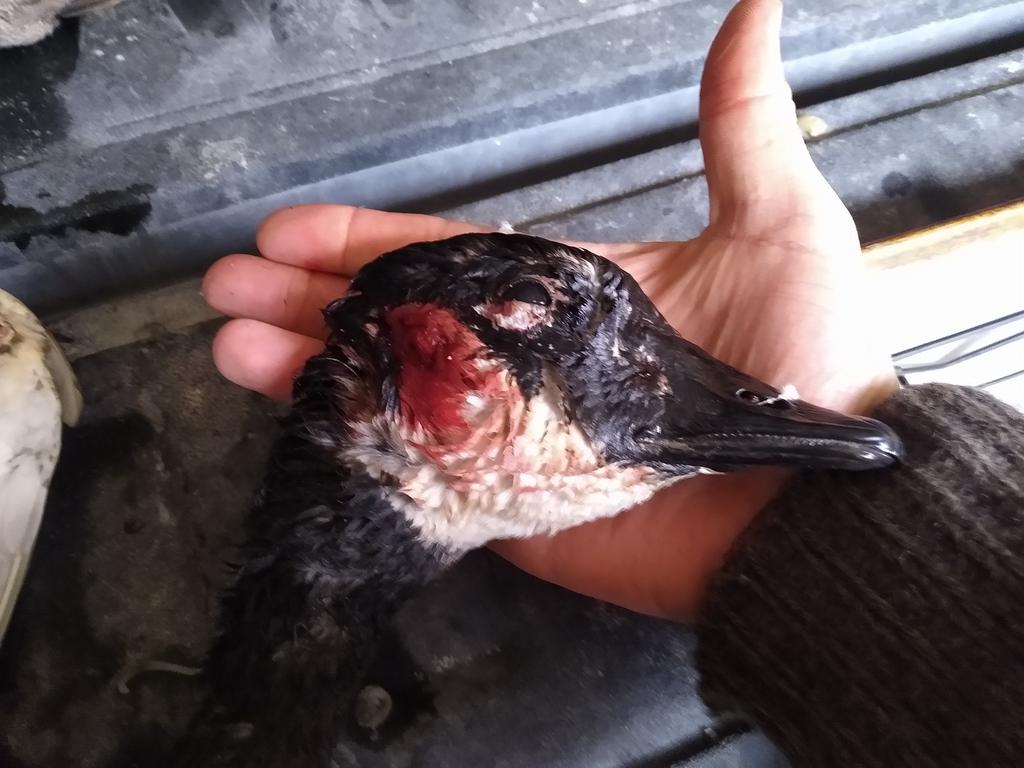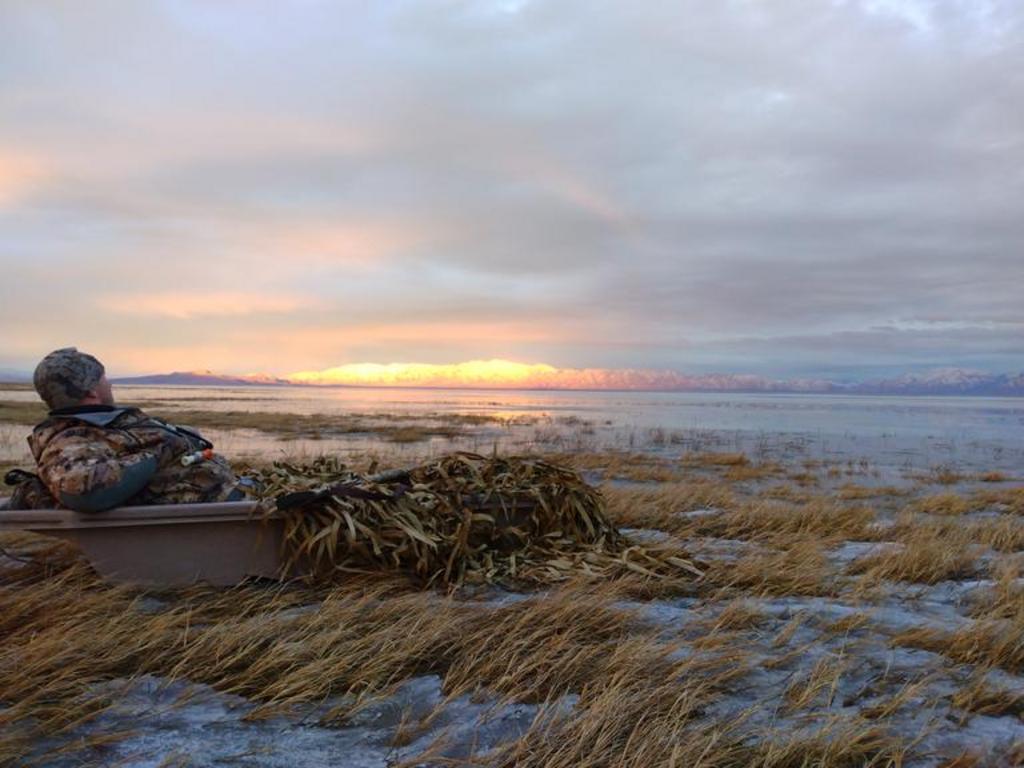I believe these events occurred during our second year hunting this farm. We were setting-up for geese on a foggy morning in the dark, trying not to blind each other with our headlamps as the three of us unloaded gear and assembled decoys prior putting the spread in place in a hay field adjacent a partially cut cornfield. A very young voice pronounced that, "My grandpa said we can hunt with you!", as three young kids in their early teens pop out of the darkness. The farmer was a patient of Eric's who had offeed him the privelige of hunting his nearly three hundred acres that butted-up against the Whitefish River east and south of Trenary. There was a massive section of beaver flowages due east of the farm that formed what was known as "The Spreads", nearly 3/4s of a mile long which held around 5,000 geese during the migration. The Autrain Power Basin also had a newly established State managed waterfowl production complex on the south end of the impoundment on lands rented from the Upper Peninsula Power Co. The State's goal was to establish a seasonal population of around 20,000 birds that would use it as a stop-over location to rest and feed during the migration, "seeded" with nuisance giant canadas that were cannon netted down-state in Oakland Co from private lakefront residences, trucked to the U.P. for release in hopes of expanding their population and range. Our first year hunting this farm was very productive. Live was good!
Eric responded to the leader of the three boy band by asking him who his grandpa was..."George Webber" came the quick pronouncement. After a quick confab we started to paw around in the flotsam in the back of our two trucks to find some camouflage netting and some army surplus sleeping pads for the boys to layout on. After we got the decoys placed we positioned them below our locations in the spread making sure they could not easily swing on birds near us...just for safety's sake. We grassed them in as best we could anf then the three of us took-up our positions and waited for legal shooting time. Just after it was legal to shoot we could hear geese calling in the thinning ground fog, but their calls were a bit different. We quickly realized that it was a flock of lesser canadas, which often got on the move at first light along with the local wood ducks. As the five birds worked around the spread they only spun by us once before turning and setting-up to drift in. Eric was supposed to call the shot, but our guests never waited, unloading on the birds and killing all of them. The remainder of the morning was productive, putting us at our limit of 12 geese, with the remaining seven birds all giants. Eric wanted to drive back to Marquette to catch the Michigan football game, so we told the kids to grab their birds and we would leave the decoys out for the following morning's hunt. When they began chattering about how they could get back to the beaver flowage off the east end of the farm to shoot those geese we admonished them to not shoot their roost because it would push the birds out of the area. Neither Eric, Steve or I were paying attention as the kids took "their" birds and left to tell their Grandpa George how well the morning's hunt had gone. After we got our guns and geat loaded Steve walked over to the goose pile to start loading birds. He started laughing, which obviousy got our attention. All five of the lessers the boys shot were still laying on the ground!
The next morning, after our hunt, we started to pick-up decoys. We had remarked how odd it was that the kids didn't show up again, particularly since we had actually grabbed enough gear to enable them to be better hdden, should they join us. While breaking the spread down we found three severed goose heads/necks laying among the decoys. Quite a mystery for about thirty seconds until we found the lead shotshell casings. It seems that the boys revisited the decoys the previous day and shot more birds... The last year I hunted there I was directed by George to talk to Bradley, since he handled all the hunting priveliges requests. As I walked toward the outbuilding that he had indicated as the location of his grandson, out walked Bradley with bloody hands. He quickly closed the large door, but not before a gust of wind blew some "odd" feathers out of the doorway and across the farm yard. Bradley informed me that they were now leasing goose hunting access... I never asked what the lease price was, I just turned and walked back to my truck. I picked-up one of the pale gray feathers that had blown out of the outbuilding entrance as I passed it, prior asking Bradley why sandhill crane feathers would be blowing around their farm yard. I never waited for a response and I never hunted there again. I secured permission from a couple of farmers about a half-mile south of this farmstead, but far fewer birds would lift-off the Whitefish from this beaver flowage complex each fall. One of the young Cotey boys, Steve, told me he and group of young men from a farm to the north found a way to drive their ATV's in to the flowage and shoot it. Two years later, State Senator Tom Casperson secured a position of chairman of the State Finance Comm., the folks who control the MDNR's finances. He introduced legislation that passed, banning all MDNR land purchases and lease spening for all State parcels larger than forty acres until each of these had a specific management plan drawn-up for it. Senator Casperson's family owns a large logging business here in the U.P. For some reason, we don't see as many lesser canadas as we used to. The other interesting thing about their behavior is that,, out in North Dakota we seldom get them to come into the decoys, while the birds that we see in the UP decoy with abandon. I never figured-put whether they were fromd different populations or just experienced different levels of hunting pressure




